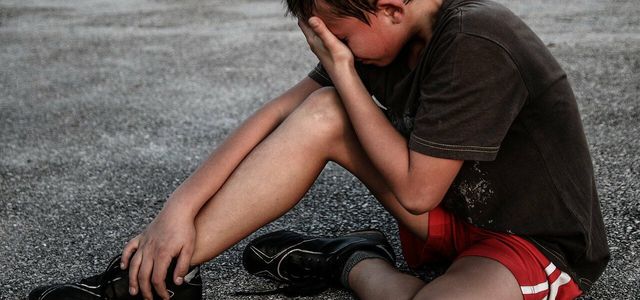
With the PECH rule you can help yourself and others with sports injuries, relieve pain and accelerate healing. We’ll explain how the rule works.
Whether playing tennis, volleyball or individual sports such as jogging or fitness workouts: Careless movements can quickly lead to sports injuries. Muscles, tendons, ligaments or joints are often damaged. This manifests itself, for example, as pain, bruises or swelling.
In this case, the PECH rule can alleviate acute symptoms and prevent worse consequences – regardless of whether the foot, shoulder or another part of the body is affected. Once you have internalized the principles of the rule, you can not only support your own body in the healing process, but also help other people who have suffered an injury.
PECH rule: P for pause

(Photo: CC0 / Pixabay / Free-Photos)
Gritting your teeth and continuing to exercise despite the pain is usually not a good idea. According to the first principle of the PECH rule, you should therefore primarily keep the affected area calm. The best way to do this is to interrupt your sporting activity and sit down or lie down. If this is not possible immediately and you have injured your foot or leg, you should at least try to support yourself when walking. In this way you can at least partially relieve the joint.
If you help other people, you can offer them your help as a support in such a situation and speak to them in an encouraging and reassuring manner.
PECH rule: E for ice cream



(Photo: CC0 / Pixabay / Bru-nO)
Around Swelling To avoid and relieve pain, you should cool the affected area according to the second principle of the PECH rule.
- The best way to do this is to use cooling pads or ice cubes. However, never put these directly on the skin, instead wrap them in a towel or rag beforehand to prevent damage from the cold!
- Cool the area for about ten minutes at a time and take a ten-minute break between the cooling phases. If you cool for too long or too much, surrounding vessels can be damaged.
- If you don’t have cooling pads or ice on hand, you can dip a rag in the coldest possible water.
- Danger: Most sports injuries (such as bruises, strains, or dislocations) are helped by cold. However, this does not apply to everyone. If you have a muscle spasm, for example, you should warm the area better.
C for compression



(Photo: CC0 / Pixabay / kalhh)
PECH-Riegel also recommends treating the affected areas with a pressure bandage. The best way to do this is to use an elastic bandage under which you can clamp the cooling pad or ice cubes. This not only ensures that they don’t slip, but also reduces swelling and bleeding.
The bandage should be tight, but not too tight. If the area goes numb, the bandage was too tight. In this case, loosen it until you feel something again or ask the person you are treating for how they are.
H for high storage with the PECH rule
For the last step of the PECH rule, position the affected part of the body as high as possible. In the event of an injury to the leg or foot, it is best to lie down on the floor and place the affected leg at a 90-degree angle on an elevation, for example on a chair. If your arm or hand is affected, you should hold your arm as high as possible for a few minutes.
In this way you guarantee that the tissue fluid can be removed more easily and avoid swelling. Elevation also prevents too much blood from flowing into the affected area.
According to the PECH rule: medical help?
In the case of minor injuries, you do not always have to seek medical advice. Nevertheless, in this case too, after applying the PECH rule, you should keep a close eye on the damaged area. If you still have symptoms after two days, you should seek medical help. This also applies if you regularly injure yourself in the same place over and over again.
Read more on Techzle.com:
- Exercise every day: is it healthy?
- Doing sport: How to find the right sport
- Workout at home: ideas for sports in your own four walls